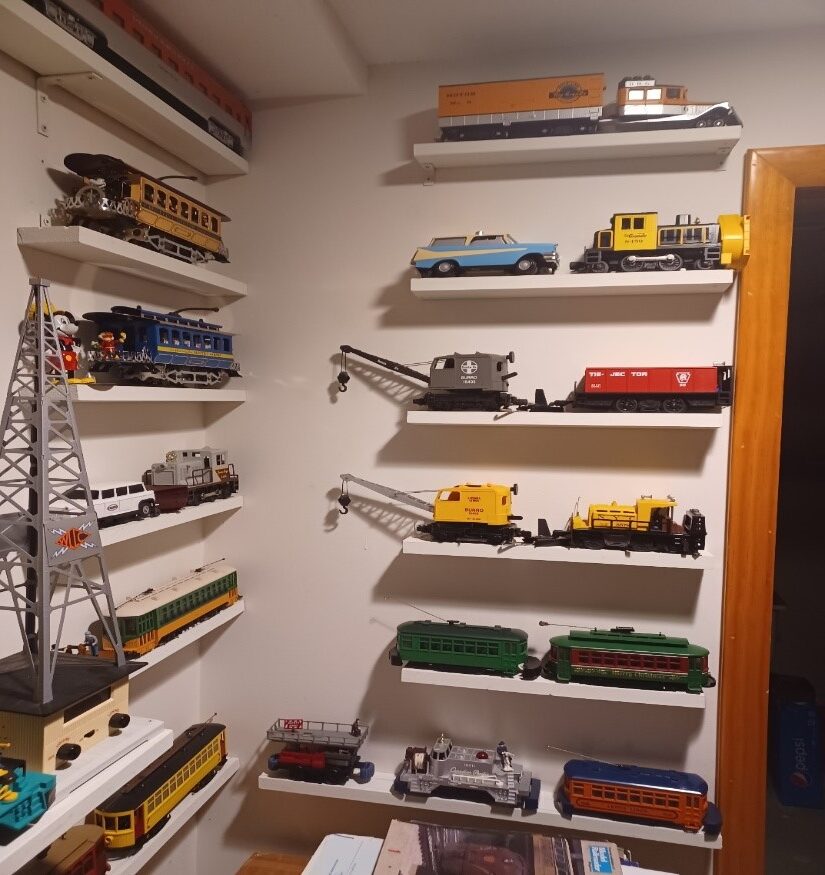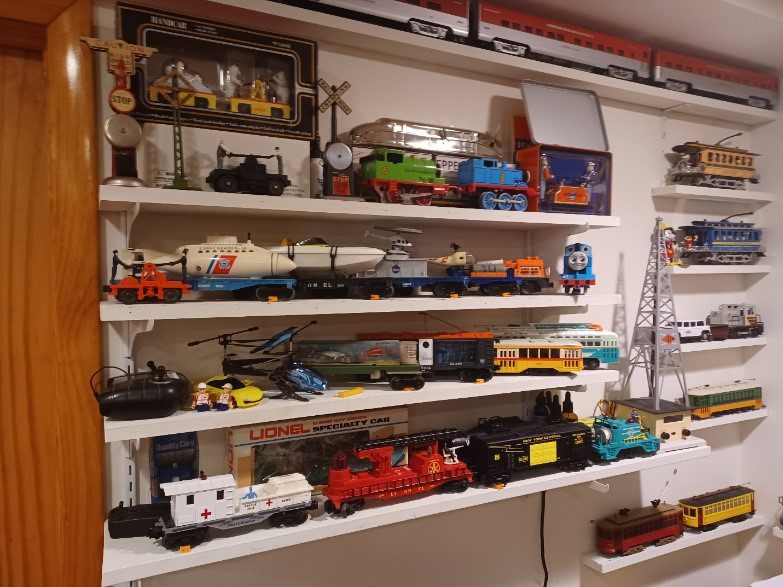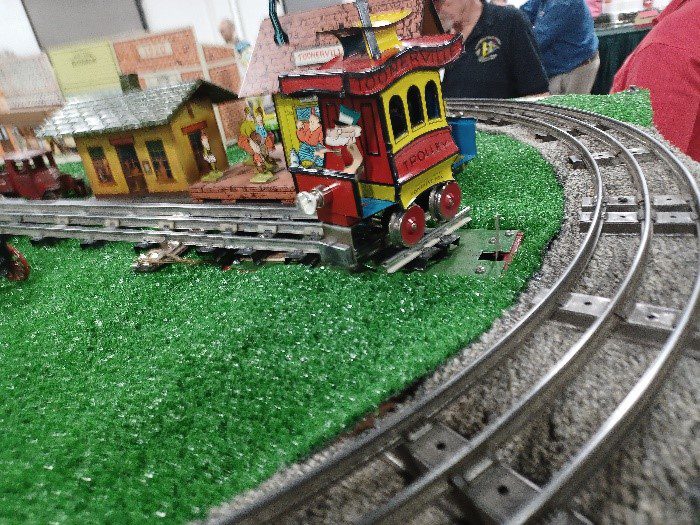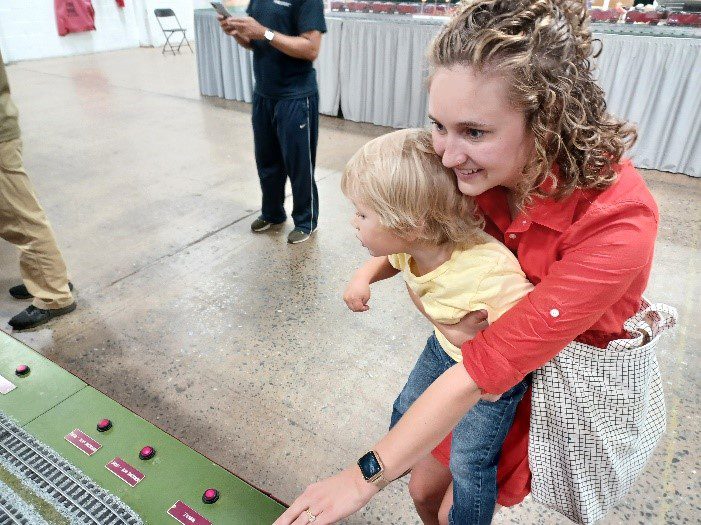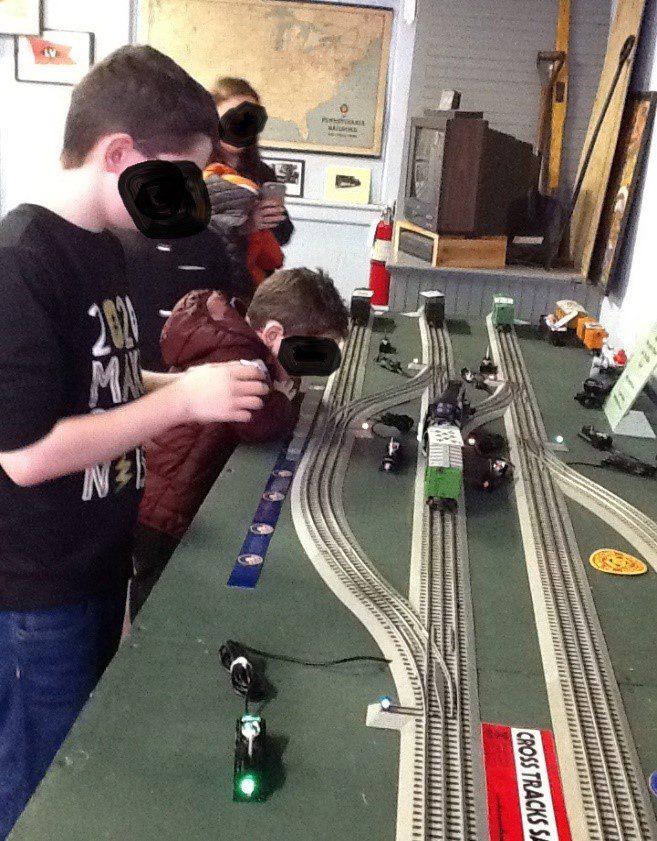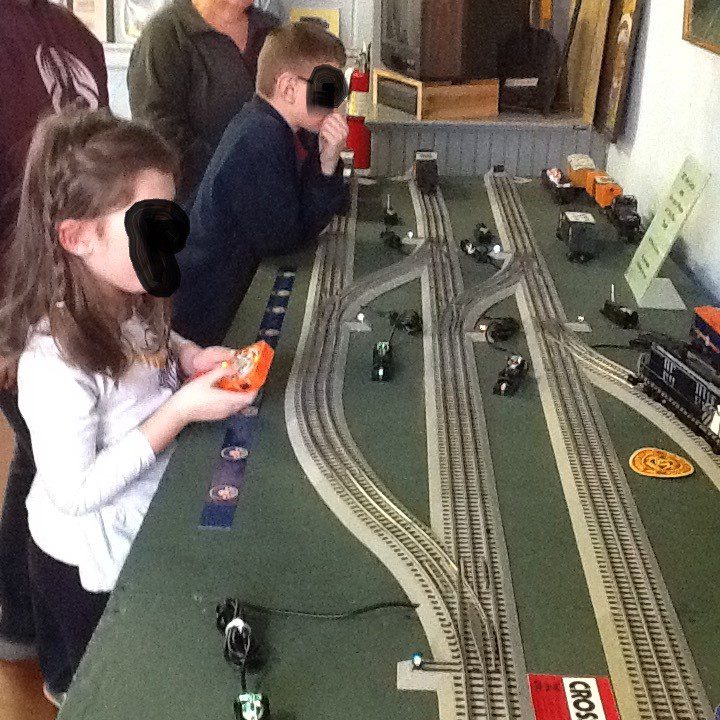Operating Motorized Units: Part 1—A Classification System
by John S. Halajko TCA #84-20653, Richard J. Sappelli TCA# 70-3365, and Leon B. Duminiak TCA 02-54067
Introduction
This article is Part 1 of a 4-part series. The four parts will be: A Classification System, Classification of Motorized Units by Operating Functionality, Increasing the Play Value by Enhancing Operations, and finally an article on Building and Operating Converted Toys. For this series of articles, Motorized Units will include Motorized Units and Operating Cars. That will allow generic statements to be made concerning clearances and reachability requirements.
Lionel and other manufacturers have created a rich diversity of Motorized Units based on the following design assumption:
The owner will provide the required track configuration and clearance requirements.
This assumption creates operational difficulties when attempting to use a Motorized Unit on an existing layout. Typical layouts have switches, tight clearances, and/or no sidings (passing or single ended) and are suspect to issues. For example, the Burro Crane Car that has the largest clearance requirements of any Motorized Unit that requires the boom to swing to change direction. On some Motorized Units, like the Lionel Giraffe Car Tell-Tale Assembly or the Cop and Hobo Car Trestle, the trip mechanism presents a clearance issue for many steam locomotives.
Furthermore, the single third rail pickup of the gang car, the Pride Lines Disney Trollies, or the narrow span of the third rail pickups prevent the item to go through switches at low speed.
Some Solutions:
- In the world of Layout Design, according to Frank McDonald former TCA #93-37488, there are three distinct layout areas: above the layout, on the layout, and below the layout. Frank hid his Christmas Snow Scene below the layout and covered it with a draw curtain. Using this area one can do the same thing for the track needed for a Motorized Unit. The Motorized Unit can be the centerpiece of the hidden under the layout track plan.
- Many operators use a single point to point track plan to operate their bumper trolley or gang car fleets. If layout room permits a simple O27 loop inside a town area is used to run a trolley or bus line. Such configurations are quite frankly, unexciting compromises, and in some cases prevent operation of other manufacturer’s products. More will be said about this in the next parts.
Definition of a Motorized Unit
For this series of articles, a motorized unit will be defined as any manufacturer’s original and unmodified train car capable of some kind of motion by using electric motors, solenoids, springs, rubber bands, or gearing along with any manufacturer’s original and unmodified self-propelled unit such as trollies, bumper cars, or handcars. That being said, electric locomotives and wind-up engines are not in this classification.
So, we will talk about planning and operating Motorized Units on a large layout or in a train garden.
Our Classification System is described below: (more info in the next part)
- Wind-ups
- Bumpers
- Loopers
- Trippers
- Draggers
- Main Liners
- Converted Toys
Based on our Classification System we will present operating ideas, recommendations when planning a layout, and how to increase play value for younger operators. The classification system allows us to talk in generalities. There will be video clips of operating Motorized Units like the Toonerville Trolley along with lots and lots of pictures.
The Rich-Art Toonerville Troller is the most wimsicial of the all the Tripper Class Motorized Units. See the January 2022 e*Train Article: Fountain Fox and the Two Toonerville Trolleys for more cool stuff on this unit. Here is just a teaser preview of the trolley in operation. The full-length video will be in the next article. To view right click on the link then select open hyperlink.
Children of ALL Ages
Photo of mother and son enjoying the Atlantic Division Layout at Greenberg at Oaks, PA (published with mother’s consent)
Lets do stuff with Motorized Units that will bring out the kid in all of us.
Photo of a child enjoying button pressing at the AD Division Layout at the Greenberg Oaks Show (published with father’s permission)
Gee wiz, this button is really cool! Photo of Child enjoying the Atlantic Division Layout (published with mother’s consent)
New Technology for Kiddos
Building a layout that appeals to children is the key to passing on our hobby to future generations. Once children progress to age seven or older, they need more sophisticated participation with a layout. One of the best progressions is by Rich Sappelli, TCA 70-3365. He has integrated his Lionel Blue Tooth Engines with freight sidings (16’ by 4’ switching sidings) into a build-the-consist game handing the controller to the visitor. He encourages the parents to download and use their smart phone to operate the train.
Keys to Successful Public Operations of Lionel Blue Tooth Engines
- Allow visitors to load the Lionel App to their cell phone. If their cell phone is unavailable, allow user access to a Lionel Remote (tethered remote to the layout to prevent loss or damage to unit by dropping)
- Use a modern era transformer with a fast circuit breaker.
- Lower the voltage to prevent derailments.
Coming in the upcoming e*Train issues:
Part 2: Classification of Motorized Units by Operating Functionality
Part 3: Increasing the Play Value by Enhancing Operations
Part 4: Building and Operating Converted Toys.

